In this episode, Scott Ramey, Founder of The Scott Ramey Group and former Fortune 500 executive, shares how authentic leadership begins with mastering your own voice and presence-and why turning anxiety into confidence is tougher than it looks.
Podcast (hfppodcast): Play in new window | Download
Learn how to listen to The Hospital Finance Podcast® on your mobile device.Highlights of this episode include:
- Why most leaders are afraid to address their own weaknesses
- Why self-work is so important for leaders to address before leading their teams
- What the evolution of a leader looks like
- Why an authentic leadership is so important
Kelly Wisness: Hi, this is Kelly Wisness. Welcome back to the award-winning Hospital Finance Podcast. We’re pleased to welcome Scott Ramey. Scott is an authentic sales expert, former Fortune 500 C-suite executive with more than $100 billion of successful sales experience and founder of The Ramey Group. He’s a seasoned leader, speaker, and mentor with over three decades of experience in corporate America. Having served as executive vice president of workplace solutions at Transamerica, senior vice president at Nationwide, and EVP at Corebridge Financial, Scott has raised hundreds of billions of dollars and led large-scale teams of up to 1,200 people, managing $235 billion in assets under his administration.
His expertise in business development, team building, and leadership has empowered countless individuals and organizations to break through barriers and achieve exceptional results. Scott drives performance and engagement by focusing on his proprietary methodology, teaching his clients how to unlearn everything they’ve been told about how to sell, and instead focusing on the four pillars of authentic sales.
After a basketball injury shattered his identity as an athlete, he turned his focus to leadership. Then after earning his BA in history from John Carroll University, he dedicated himself to personal and professional growth and success. Scott has received numerous professional accolades, such as the Corebridge Catalyst senior leadership award and is a proud member of the National Speakers Association. In this episode, we’re discussing real leadership starts with self-leadership, and it’s harder than it sounds. Welcome and thank you for joining us, Scott.
Scott Ramey: Kelly, thank you. I appreciate that warm introduction.
Kelly: Yes, well, let’s go ahead and jump in today. So, would you walk me through your career in leadership, and what were some of your most memorable moments?
Scott: Yeah, I mean, I think you outlined some of the roles I had, the responsibility, and I appreciate you giving some background to the listeners. But I spent the better part of my career leading large teams in high-pressure environments. And I don’t regret any of that, not even remotely. I was an internal wholesaler, external holder, sales leadership, business development leader. But I would tell you the most memorable moments weren’t those big wins. They were the quiet realization that what got us here wouldn’t get us further. And the team understanding that concept as well and that perspective. So, there have been times in my career where I had a lot of talent and a lot of tools, but we still didn’t perform at a level that I would have liked. And I realized it really wasn’t, at that point, about pushing harder. It’s how do I pull everybody together? How do I get the message aligned, the team aligned, and align myself, frankly? And so those are the moments I remember most is when you’re sitting back and reflecting upon what’s happening within your organization and you’re feeling the momentum, but you’re not quite seeing the results. And that’s really what I love most about leading teams, it’s how can we get everybody to get more aligned to do things slightly different so we could improve the results for ourselves and for the organization.
Kelly: It’s impressive. Thank you. So why are most leaders afraid to address their own weaknesses?
Scott: Well, look, I grew up, and most of my early childhood was in the late ’70s, early ’80s. And I think a lot of us bring in this perspective that we were conditioned to believe that leadership is about certainty and that emitting our weaknesses equals losing authority. And so that kind of command intent and top-down leadership approach, in many respects, we’ve shifted that culturally. And I think in this new generation, this new time and new era, that real leadership isn’t about pretending that you’ve got it all figured out. It’s having the courage to be honest so you can grow, and then the organization grows with you. So, I think it’s uncomfortable for many of us to realize and admit to ourselves even that we don’t have to have all the answers. And I think that’s where the real magic starts to happen with leaders and their teams is the openness not necessarily to be right, but the openness to be proved wrong and/or to collaborate in a different way. And so, I think that’s a really– I think that’s really the heart of why we don’t want to admit that we have weaknesses.
Kelly: I completely agree with that. Yeah, it’s very difficult to address your own weaknesses and to admit that you’re not certain about things. So why is self-work so important for leaders to address before leading their teams? And how does this improve team performance?
Scott: So, what I would say to this… this is a great question. I love this question a lot because this is– I call it kind of the quiet underbelly of counter intention in organizations and teams. It’s the conversation after the meeting, the watercooler chat, the meeting after the meeting. The bottom line is this: our teams take their cues from what’s unspoken, not just what’s being said. And what I like to say is that what you won’t say publicly is already being whispered privately. So, if you’re not clear who you are, your team feels that fog. I think about the law of vibration as an example, the energy transfer. And so, if we have uncertainty about ourselves, our teams are going to feel that. If we’re not certain about the direction that we need to go, the earlier question to have the answers, the team’s going to feel that. And if you’re not addressing the tension that’s existing in your organization, your teams are going to be talking about it because everybody’s seeing what you’re seeing. In many instances, they just have the courage to speak it out loud, and you don’t as a leader. And so, I think earlier in my career as a newer leader, I felt that was really the paradigm that I lived in. I’m like, “I have to have all the answers. I need to be in command control. Me, me, me, me, me.” As I matured as a leader, I realized it really wasn’t about me at all, and that’s when I started to put the focus on everybody else other than me, then the tension started to relieve itself, and we started to see better performance.
Kelly: That makes a lot of sense, Scott. What does the evolution of a leader look like?
Scott: I like the position as kind of the four R’s of reveal, being honest about what’s true. Ray Dalio calls it radical transparency, and I think that’s what you have to do with yourself. For example, I’ve lived with anxiety most of my life. I had my first panic attack when I was 19, a junior in college. You referenced the injury to my college career. My identity was basketball. And I had a panic attack when I went to have that conversation. I’ve lived with that for most of my adult life, this anxiousness, this mask that I would wear. But really, the real hard work for me was done about two years ago in a conversation with my daughter where I shared with her, and she was the first person outside of my wife, Michelle, who learned that I had anxiety most of my adult life. But when I revealed that, the tension released itself. And so, leaning into the tension and being honest about who you really are is the first step. The second is reframing or shifting how you see yourself and your role. And that may be from more of a traditional command intent, top-down leader, to one who’s more collaborative. And that’s a significant shift in reframing that has to occur. The third R is reflect. You realign your behaviors with your beliefs. So many of us as leaders think we have to behave a certain way, and that’s entirely not the best approach to take. It goes back to the earlier point we discussed around how one views you. And if you’re trying to be somebody and you’re masking this identity that you think is going to be who you think people want you to be or your leader expects you to be and you’re not truly who you are, then you’re not, I think, in a really positive perspective. Lastly, and maybe most importantly, is reimagining what’s possible. I think a lot of us get stuck. Our organizations get stuck because we’re unwilling to really see what is possible. Bob Proctor, who does really wonderful meditations…he says if you can see it in your head, you can see it in your hand. And I think this idea of creating a bigger, broader sense of what’s the potentiality of our teams is really important as leaders.
Kelly: I love those four Rs. Thank you for sharing those with us. Why is authentic leadership so important, and how does one go about it?
Scott: Yeah, authentic leadership is important because people don’t just follow titles. They follow truth. And when you’re real, you create safety for others. Vulnerability is an interesting topic that so many of us as leaders are unwilling to be vulnerable because of what we’ve chat about up to this point. The reality is, as I look at vulnerability as an opportunity to transition strangers into allies and stories into shared experiences. When you’re vulnerable with your team and you admit to the errors you’ve made or the misguidance, the direction you took down the team down or the organization, whether it be strategy or tactically, when you’re really vulnerable about what’s happening and you’re talking about that on a regular basis and have honest, open communication with your own challenges, it’s remarkable what happens when everybody else starts to align behind you and your intentions, your actions, your energy. And so authentic leadership is so important, kind of unmasking yourself and saying, “This is me in all my glory and all my flaws. Will you still follow me?” The answer is, most of the time, yeah, they will. In fact, they’ll follow you with more enthusiasm and trust if you really allow your team to see who you authentically are.
Kelly: Yeah, I love that, that showing vulnerability is so difficult to do, but I mean, it’s so important. How can leaders address tension that they feel head-on to improve themselves?
Scott: Well, first and foremost, we need to stop avoiding it. Attention is the signal, and it’s pointed as something that’s probably misalignment in one way, shape, or form, either internally in the organization or on your team, or all of the above. When I think of– where I really spend most of my time, oftentimes, people aren’t calling me because things are going very well. And the clients that I work with are reaching out to me, generally speaking, because there’s underperformance in some way, shape, or form. Underperformance can take a lot of different forms…underperformance in self, team, organization. But there’s that tension that existed. And so, the first step is to surface that tension and really call it out to collect the symptoms, locate the gaps, explore the root tensions, and really get transparent about what’s happening and why. Because once you start to lean into that tension and you’re no longer avoiding it, that’s where the transformation occurs. Yes, it’s very, very discomfort, very uncomfortable – excuse me – which is why a lot of leaders won’t kind of turn toward the tension, but it’s necessary to continue to grow, and most importantly, to get your team aligned behind you. Because again, they’re seeing it. They’re experiencing it. They’re feeling it. And if you don’t have the courage as a leader to lean into it, then I think you’re going to lose your team.
Kelly: That makes a ton of sense, Scott. So, what are some tips for leaders when doing the inner work that they need to become great leaders?
Scott: Oh, I love this question because this is really– and for those leaders that are listening who are running organizations and they feel like they can’t look up at all. They’re in the business, not on the business, and they’re doing everything but spending time leading their team because of all the different ways and directions that they’re being pulled. I would say the first step is just to get quiet. Get quiet. Put yourself in a space where you can reflect and be thoughtful and really do some of the things that we’ve discussed today, but it starts with being quiet. The second is ask better questions inside the organization and outside. What am I avoiding? Where am I misaligned? Where’s the organization misaligned? Third is find a mentor. Work with somebody who can help you see what you can’t see. And then lastly, and maybe most importantly, is don’t overcomplicate things. Oftentimes, as leaders, we have all these different priorities. And what I’ve seen time and time again is that we try to take on too much, we try to get too much done, and in doing so, we’re creating misalignment in our organization. So, I would get really crystal clear on what are the two or three top priorities, the must-wins, those big rocks that we have to move. So, I can start to rally the organization, my team, and everyone around it. And that’s where real influence starts to happen is that when we get crystal clear on what we want to accomplish, then everybody in our team and in the organization starts to see what we’re accomplishing. And that’s where the real beautiful part starts to happen within organizations that are maybe not performing at a level they need to perform at.
Kelly: We appreciate you sharing those tips with us. Well, thank you for sharing your insights with us on real leadership starts with self-leadership, and it’s harder than it sounds. If a listener wants to learn more or contact you to discuss this topic further, how best can they do that?
Scott: Two great spots. One, my website, thescottramey.com, R-A-M-E-Y, and then LinkedIn. I’m pretty visible and active on LinkedIn with my networks. So those are two great places to find me.
Kelly: Great. Thank you for sharing those with us. And thank you all for joining us for this episode of The Hospital Finance Podcast. Until next time…
[music] This concludes today’s episode of The Hospital Finance Podcast. For show notes and additional resources to help you protect and enhance revenue at your hospital, visit besler.com/podcasts. The Hospital Finance Podcast is a production of BESLER | SMART ABOUT REVENUE, TENACIOUS ABOUT RESULTS.
If you have a topic that you’d like us to discuss on the Hospital Finance podcast or if you’d like to be a guest, drop us a line at update@besler.com.





